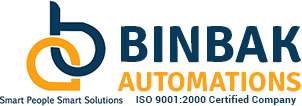BinBak Automations has extensive experience in design of critical Transmission and Distribution Power Systems. We provide complete solution of Electrical Power systems – Design, Installation, Testing and Commissioning in CONTROL CENTRE SCADA, EMS, DMS along with the Cyber Security features. We have dedicated team of experienced graduate engineers & technicians backup by design team and sales team who is always engaged for reliable and smart solutions for the client and user.
SCADA/EMS/GMS,DMS (supervisory control and data acquisition/Energy Management Syestems/Generation Management System, Distributed Management System) supervises, controls, optimizes and manages generation and transmission systems and Distribution Systems.
1960’s SCADA/EMS/GMS/DMS systems at that time were designed exclusively for a single customer. Power systems were vulnerable, and there was a need to develop applications and tools for preventing faults from developing into large-scale outages. In the 1980s it became possible to model large-scale distribution networks in a standardized way. The deregulation and privatization of the power industry that began in the 1990s was the biggest structural change in the industry’s history. Specialization became increasingly common, with many utilities focusing on either generation, transmission or distribution. SCADA/DMS Distribution Management systems performs the same functions for power distribution networks. Both systems enable utilities to collect, store and analyze data from hundreds of thousands of data points in national or regional networks, perform network modeling, simulate power operation, pinpoint faults, preempt outages, and participate in energy trading markets.
The control center is the central nerve system of the power system. It senses the pulse of the power system, adjusts its condition, coordinates its movement, and provides defense against exogenous events. A SCADA is an on-premise solution, meaning all control and data storage happens on a physical server. The SCADA is used by System Integrators and Utilities to collect data. It sits in the bottom middle of the brain and works closely with the posterior and anterior pituitary glands. The hypothalamus controls bodily functions such as hunger, thirst, body temperature, water levels, salt levels, and energy levels.
EMS is cloud-based, meaning all the data, programs and controls are stored and accessed over the Internet, from any computer . An energy management system (EMS) is a system of computer-aided tools used by operators of electric utility grids to monitor, control, and optimize the performance of the generation or transmission system. Also, it can be used in small scale systems like microgrids. ISO 14001 is the international standard that specifies requirements for an effective environmental management system (EMS). It provides a framework that an organization can follow, rather than establishing environmental performance requirements. An EMS helps an organization address its regulatory requirements in a systematic and cost-effective manner. This proactive approach can help reduce the risk of non-compliance and improve health and safety practices for employees and the public.
A DMS is a decision support system that is intended to assist the distribution system operators, engineers, technicians, managers, and other personnel in monitoring, controlling, and optimizing the performance of the electric distribution system without jeopardizing the safety of the field workforce and the general public and without jeopardizing the protection of electric distribution assets.” .DMS applications are utilized in outage management processes, DMS also extends to the efficient management of planned work and normal electrical operations.
Smart Metering and Smart Grid technologies impacts ,Network management is a prerequisite and vital for any smart grid of the future. These grids will have to incorporate and manage centralized and distributed power generation, intermittent sources of renewable energy like wind and solar power, allow consumers to become producers and export their excess power, enable multi-directional power flow from many different sources, and integrate real-time pricing and load management data.
